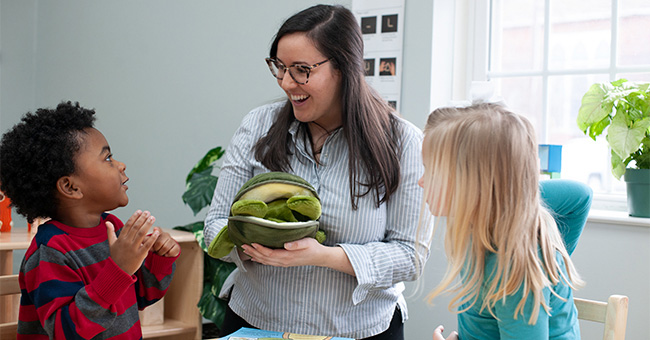
In the second installment of Dr. Tonia Durden's newest series Dear CRT, she encourages educators to reflect on how they interact with others, especially the young Black and Brown children in their care. Explore the rest of her series here.
Dear CRT,
Who was the last person you interacted with? Was it a spouse? A child? A colleague? A grocery store clerk? In this interaction what was the tone? Were you speaking softly? Loudly? Firmly? Or with a hint of laughter and wit? What were the actual words that were said, questions that were asked? Did you smile, frown, laugh, or show a "don't play with me" face? Would the other person say you were pleasant? Kind? Grumpy? Sad? Happy? How would YOU characterize your interaction with this person?
As early childhood professionals, we have a reputation for being happy, cheerful, quick to hug, and slow to anger. My goodness, we walk around with an invisible shirt that says "I love children, I'm a lifelong learner and yes teaching is my passion." Did you know, however, that schools generally have a reputation for not being warm, friendly, and welcoming to Black and Brown children? This especially becomes evident as we get to the root of why so many racially diverse children are disproportionally underrepresented in gifted programs and overrepresented in special education.
If you are as committed as I am to ensure that my engagement with all children, is responsive and meets our early childhood expectations, the great news is that many educational scholars have done the heavy lifting for us on identifying the how to or rather how not! For example, one of the key cornerstones in culturally responsive and anti-racist teaching is really reflecting upon how we are consistently responsive and authentically committed to high-quality learning experiences when interacting and engaging with all children.
Therefore, consider the following few steps in your own self-reflective journey:
Step 1: Ask
Ask three close friends and three children you teach, what is one word that would describe me? Don't debate. Instead, seek clarity, or ask why, if needed, then move to Step 2.
Step 2: Reflect
Reflect upon the words that you were given. This step is important because sometimes we are unaware of how people "experience" us and therefore are unable to really improve our connections, interactions, and engagement with others. This is especially the case with young children who sometimes don't have the words to say, "Every time I want her attention she snarls at me or tells me to sit down and be still." Next, identify one child who you wouldn't mind cloning and another child who you would like to be invisible for a day (be honest). Consider your interactions with both of these children and reflect upon the "why." Then, dig deeper. What are the multiple identities of these children? Family circumstances? Learning styles and abilities? How and what triggers do they evoke for you (pleasing and non-pleasing)?
Step 3: Take Action.
We all can improve in our consistency in creating responsive environments for all the children in our care. Therefore, identify the ways in which YOU can be more responsive in your interactions with young children. We know what it means to be authentically present, kind, and gracious to children as we have had educational training, the reputation, and t-shirt or coffee mug to prove it! Therefore, building upon what we already know as the "how to," taking action means to identifying when you "are not."
Consider the following action steps:
- Seek help and support from a peer, parent, or community observer to provide feedback and strategies on how you engage and interact with children in your classroom.
- Record yourself so that you are clear and conscious of your tone, body language, and responsiveness to the children in your care and your level of consistency.
- Identify what actions (or children) that create both positive and negative response "triggers" from you.
- Determine the extent to which you like, enjoy learning from, and are knowledgeable about the children in your care and their families (including the cultural and linguistic knowledge they bring with them).
I do hope, Culturally Relevant Teacher, that we can be honest with ourselves when we fall short of being responsive and positive in our engagement with young children. Part of our journey is to do no harm, recognize when we are, then take action to heal and become better educators. Stay tuned as the next blog will focus on specific strategies for culturally responsive engagement and interactions that support children's social and emotional development.
Sincerely,
Tonia Durden
About the Author
Tonia Durden, PhD, is a clinical associate professor of early childhood and elementary education and is a program coordinator at the Georgia State University College of Education and Human Development. She is also a co-author of the book Don't Look Away: Embracing Anti-Bias Classrooms.
Explore This Series
Dear CRT: Creating Culturally Relevant Classroom Environments
Dear CRT: Guiding and Nurturing Children
Dear CRT: Approaches to Learning
Dear CRT: How to Be Anti-Racist & Anti-Bias
